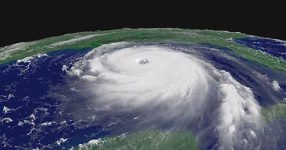The documentary “One in a Billion Moments in Nature” takes viewers on a captivating journey through the extraordinary and sometimes eerie wonders of nature. The hour-long episode compiles a series of rare and bizarre occurrences in the natural world, providing a visual spectacle of moments that defy expectations and showcase the unpredictable nature of our planet.
Avalanche Drama in Elbris Region:
On the 24th of March 2018, in the Elbris region, more than 10 avalanches descended, leaving a trail of destruction. This natural event, not driven by human interference, led to a peculiar situation where an avalanche headed straight for a parking lot. The intense footage captures the force with which snow can roll down a mountain, easily moving and crushing iron cars. Unfortunately, the avalanche swallowed 15 cars, and the cleanup took approximately six hours, emphasizing nature’s power and unpredictability.
Global Warming’s Impact on Newland Island:
The documentary delves into the consequences of global warming, highlighting the drastic effects of rising temperatures on the environment. As temperatures reach extreme levels, objects like trash bins, mailboxes, and even vinyl records cannot withstand the heat. The narration paints a vivid picture of a world on the brink, humorously speculating about the final days before an apocalyptic scenario. The viewer is left to contemplate the potential consequences of human-induced climate change.
Cyclone Oswald’s Foam Party:
The focus shifts to the Australian coast in 2013 when Cyclone Oswald wreaked havoc, causing approximately $2.5 billion in damages. Unlike a typical party, this natural event turned destructive, as the cyclone threw seafoam onto bushes, fences, trees, and even buildings. The unexpected twist came when the foam was revealed to be created by spiders from the tetra family, thriving in the conducive environment formed by the cyclone. Despite locals’ initial terror, biologists reassured that this phenomenon was a natural consequence of weather conditions, underscoring the intricate relationships within ecosystems.
The Enigmatic Catatumbo Lightning Phenomenon:
The documentary takes a surreal turn as it introduces the Catatumbo Lightning, a natural phenomenon occurring at the confluence of the Catatumbo River into Lake Maracaibo in Venezuela. Described as a long-running show of continuous lightning strikes, the footage showcases clouds mysteriously enveloping the shoreline, resembling giant holes in the sky. Scientifically known as the Beaufort effect, this rare phenomenon involves water spouts forming beneath a snow squall, presenting viewers with awe-inspiring visuals and challenging the boundaries of what seems plausible.
Giant Hailstones, Spider Invasions, and Ice Prisons:
The narrative continues to unravel nature’s mysteries, touching on giant hailstones, spider invasions during cyclones, and the peculiar ice prisons formed by natural phenomena like the Catatumbo Lightning. The documentary weaves a captivating tale of extreme weather conditions and their surprising consequences, captivating viewers with both the beauty and the potential dangers hidden within these natural events.
Glacial Caves and Okanagan Lake’s Unique Appearance:
Exploring the beauty of nature’s formations, the documentary introduces viewers to glacial caves formed by melting water under or through glaciers. The intricate process of cave formation during summer months is vividly described, offering a glimpse into the fascinating world beneath the ice. The narrative then shifts to Okanagan Lake, which intrigues with its giraffe-print-like appearance, known as the blue tide. The phenomenon, driven by the bioluminescence of marine organisms, illuminates the ocean with various shades, creating a mesmerizing spectacle.
Flying Spiders, Mayflies, and Snow Swords:
The documentary ventures into the world of flying spiders, mayflies, and snow formations at high altitudes. It presents a visual feast of unusual natural occurrences, from spiders using their webs as sails to mayflies with a brief lifespan. The stunning visuals of snow formations resembling sharp, peak-like blades add to the narrative, captivating audiences with the diversity and uniqueness of nature’s creations.
Pando, the Trembling Giant, and Mirror-Like Lakes:
The focus shifts to Pando, the world’s largest known living organism, an immense grove of genetically identical trees in Utah. The documentary explores the interconnectedness of these trees, suggesting the age of the main trunk to be potentially millennia. Transitioning to mirror-like lakes, the narrative unfolds the romanticism of places like Lake Laach, where stars find their twins in the water, alongside the practical production of lithium used in smartphone batteries.
Mud Volcanoes, Tornado Destruction, and Icefalls:
The documentary takes a geological turn, introducing the audience to mud volcanoes, tornado destruction, and icefalls. From the mud volcanoes of the Tabin Nature Reserve in Malaysia to the F3 level tornado that struck Pilger, Nebraska, the narration encapsulates the raw power of nature. The visual journey includes mesmerizing icefalls, emphasizing the potential dangers and awe-inspiring beauty inherent in these natural occurrences.
Burning Gas Flares, Glacier Lake Escapes, and Ice Blockades:
The narrative unfolds with the controlled burning of gas flares along the Capucha Glacier Lake in Nepal for safety reasons. Viewers are then taken to a thrilling escape on the glacier lake, where tourists enjoy nature amidst potential hazards. The documentary touches upon the formation of ice blockades, explaining their capacity to block river flows and cause flooding. The immersive storytelling showcases the delicate balance between nature’s wonders and the potential risks they pose.
Shandong’s Waterfall Trees and the Stubborn Swamp:
The documentary “One in a Billion Moments in Nature” concludes with the unexpected sight of waterfall-like resinous trees in Shandong, China. It presents a mesmerizing scene where these trees, native to warm regions, inexplicably release water, creating a natural spectacle. The final segment explores the coordination and effort required to manage a stubborn swamp, showcasing the delicate equilibrium in maintaining ecosystems. The captivating visuals and engaging narration leave viewers with a profound appreciation for the diversity and power of nature.












